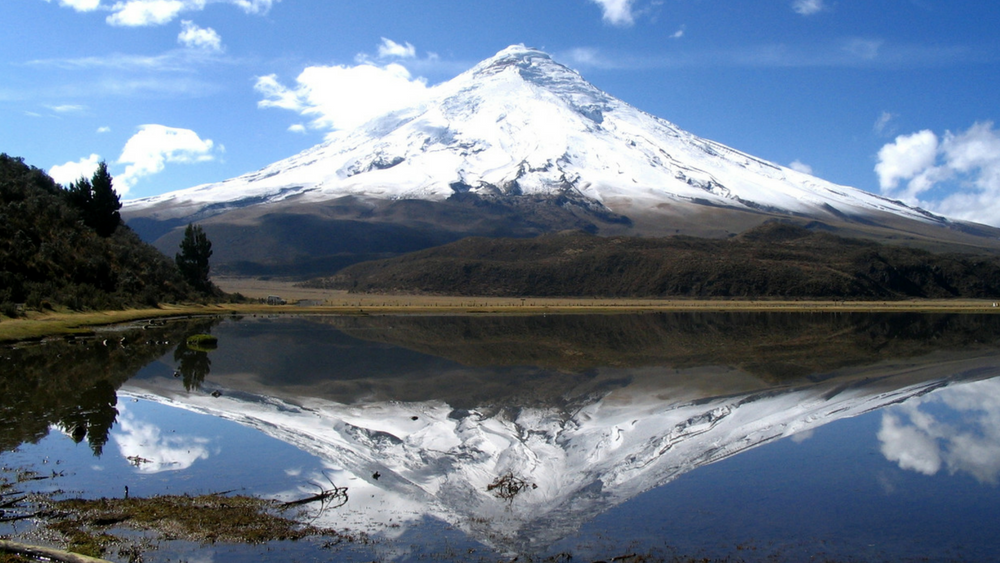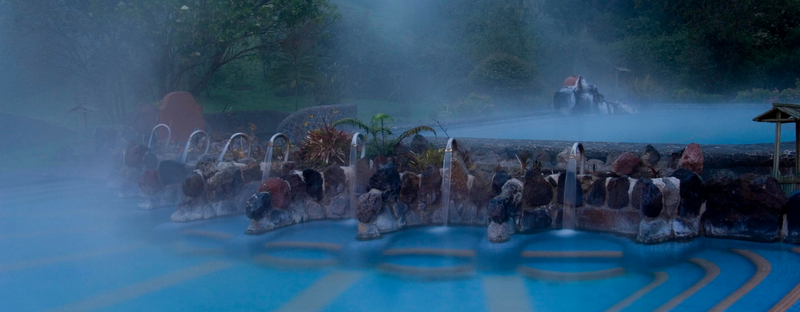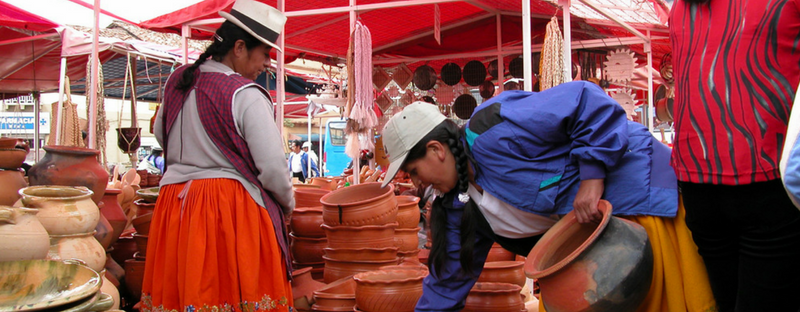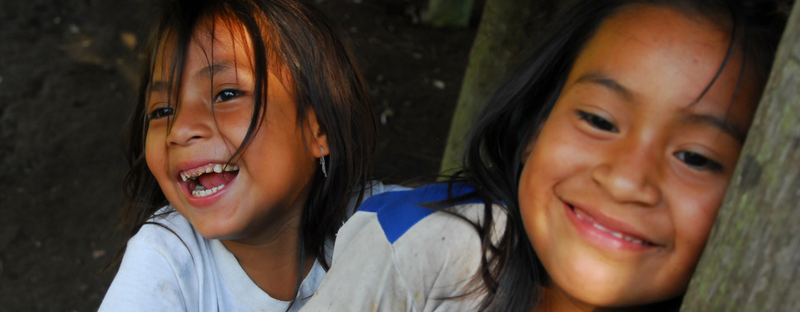From the Andes to the Ecuadorian Amazon, my experience!

Story by Latin Trails - Galapagos Journey Cruises

As an Ecuadorian, it makes me proud think that I come from an exuberant country, very rich in culture, flora, fauna, and life! Nonetheless, I´ve been living more than half of my life in Germany, and I haven´t had the opportunity to discover the wonders of Ecuador until now.
One of the things that catch my attention is the contrasts in vegetation that I can see from region to region through the mountains. I began from the rocky and volcanic fields to the bushy cloud forest that host many species of birds, insects, flowers, and so on. Not in vain Ecuador is known as the country with the highest biodiversity per square meter worldwide. In this opportunity, I would like to share my experience traveling from the Andes to the Amazon.
My journey began in Quito, the second highest capital in the world. We crossed the heritage city passing through the valley of Antisana highlands. Thank god that the fog started to dissipate, so it let us felt the wonder of being in the Andes, but right in the equatorial line, in the middle of the world.
It´s impressive how the temperature quickly changes from the Andean cold to the humid and heat Amazonian weather in a few hours. That´s why, due to this geographical variation many animal species live in the barrier between the Andes and the Amazon; surrounded by green lands just in the entrance of the lungs of the world, where plants are so exuberant.

The journey allows us to do strategic stops. The first one is at the hot springs of Papallacta, which means land of potatoes in Quichua. This town comes from the Inca´s period, before the colonization, and since then the healing effect of its sulfuretted water has caught the attention of locals, and nowadays of visitors.
Our next stop, which I considered mandatory during the journey, it is the hummingbird sanctuary of Guango Lodge. It is an own private reserve that protects the cloud forest, where endemic birds live in a safe environment. For bird watchers, this stop is a must, and even for someone like me, that struggles to watch the birds in the forest the atmosphere and the hummingbirds make unforgettable the experience at this place.
There is also another option ideal for people looking for more adventure, which is Peña de Pivico and its climbing wall. It is a volcanic stone that stands out from the bushes that have several climbing routes for different levels. However, for those people that are not climbers, like me, there are also many walking paths, restrooms, lookout points, and summer houses, all of them built with eco-friendly materials.
Then, we continue the journey by car until reach Baeza, which is the second biggest settlement in this sector. The area divides in two, Old Baeza and New Baeza. The first trekking that we did was from Baeza Colonial, going to the radio masts above the city. From here the view is breathtaking, we could see the waterfalls. I cannot deny, personally, that long treks excite me.

At the southeast, we found the Antisana Ecological Reserve while at the Southeast it is the Sumaco-Galeras National Park, which is the more pristine and remote national park in Ecuador. Hence, we decided to visit Sumaco-Galeras, and it has two closest entrances. One it is San Isidro, 15 minutes by a car going to the south, and San Carlos who is the other it´s one hour to the east on the way to the Reventador volcano.
Once we were in Baeza, we decided to do kayaking and also visiting the highest waterfall in Ecuador, San Rafael waterfall. One interesting fact we found is that this town was one of the places were Spaniards arrived in the Colonial period to evangelize the locals, so it is common to found Quichuas and mestizos.
Our trip continued to Archidona, which is allocated on the valley of Mishualli river, and it was founded in honor of the native city of Bartolomé Marin in Spain. Nowadays, t is the second political center in the Napo province, and it is the home of more than 5.000 inhabitants. As it is very common in Ecuador, it is a place full of contrasts. Here, indigenous are called Naporunas (meaning people from the Napo); most of them Quichuas and Waoranis. In this place, I found interesting the mixture and fusion of Christianism and indigenous customs and beliefs; mainly observable in the dance expressions, the language, and lifestyle. Archidona it is a sightseeing site for visitors to stop.
From Archidona it is possible to visit the Caverns of Jumandi, only two kilometers (1.2 mi) away from the city center. It takes no more than 10 minutes walking. This cavern was named on behalf of the indigenous Jumandi that fought against the Spaniards. Even though it is a bigger cave, it is possible to visit only a small part of it. I couldn´t believe that it has a spring water swimming pool, and also a natural slide. Another thing that I would never forget is that the cavern host 66 species of bats, which I´m not such a fan. According to the guide, only three species feed on blood and the rest from insects and fruits.
Continuing the adventure from the Andes to the Amazon, we arrived at the Tena city. It is a lovely place, where many visitors decide to spend some days either before or after a trip to the Ecuadorian Amazon.

Tena has a friendly population, and a green environment covered by bushes, and with a significant number of accommodations. For many people fan of crystalline water, like me, come to Archidona to kayaking because of the confluence of many rivers here. Moreover, without a doubt, it is highly recommending to kayak along the rivers.
From Tena it is very easy to go to Puerto Misahualli; it´s an organized, tranquil, and organized town. It is well known for its sandy beach at the river basin. Also, it is the home of the playful monkeys which are free and fearless to people that walk around the dock. Also, we visited the local indigenous communities, and travel in a canoe along the river, enjoying the tranquility of nature.
At Tena, there are plenty of activities to do. For example, there is the Amazon Animal Rescue Center, Lata's waterfall, spring water lagoons were it is possible to watch caimans, and also it is possible to taste the Chontacuro which is a palm worm.
Regarding food, I can say that Tena has a wide variety of dishes that have Chontacuro, or palm worm, as their main ingredient. The first dish that I tried is the Mayun Ninpuga; a preparation of Chontacuro wrapped in plantain leaves and grilled. Also, it is very common the worm skewers and the fried worm. Most of these dishes are served with plantain, fried cassava, and lemon for seasoning the worms. I cannot deny that it was a bit shocking and difficult for me to try the Chontacuros but in the end it worth it. In fact, why shouldn’t I try the local gastronomy and delicacies? It is part of the experience, the Amazon culture, and traditions.
Our last stop in the Amazon city of Tena was the Biological Station Jatun Sacha, an NGO that conducts fields researching on the upper Amazon rainforest in Ecuador. The scientific station has 2.200 ha, which 70% represents primary forest and the rest secondary forest in growth.
This journey that started in the Andes and finished in the Amazon is a memorable and unique experience that give chills to both locals and foreigners. I´m as an Ecuadorian that has lived for more than 25 years abroad it was a bucket list trip, but I traveled with a group of friends from Germany, the US, and the UK which were excited to experience another side of Ecuador. Moreover, we all are glad that we did it and also thankful with Latin Trails to tailor this trip based on our needs and interests.
Ecuador, without a doubt, is a small country huge in biodiversity, adventure, and authentic experiences awaiting for being discovered for more adventurous visitors, those that want to travel off the beaten path.
If you want to tailor your own adventure, don´t hesitate to contact Latin Trails at [email protected]. They will be happy to work in your requirements.
Yolanda Bustos - August 2018


